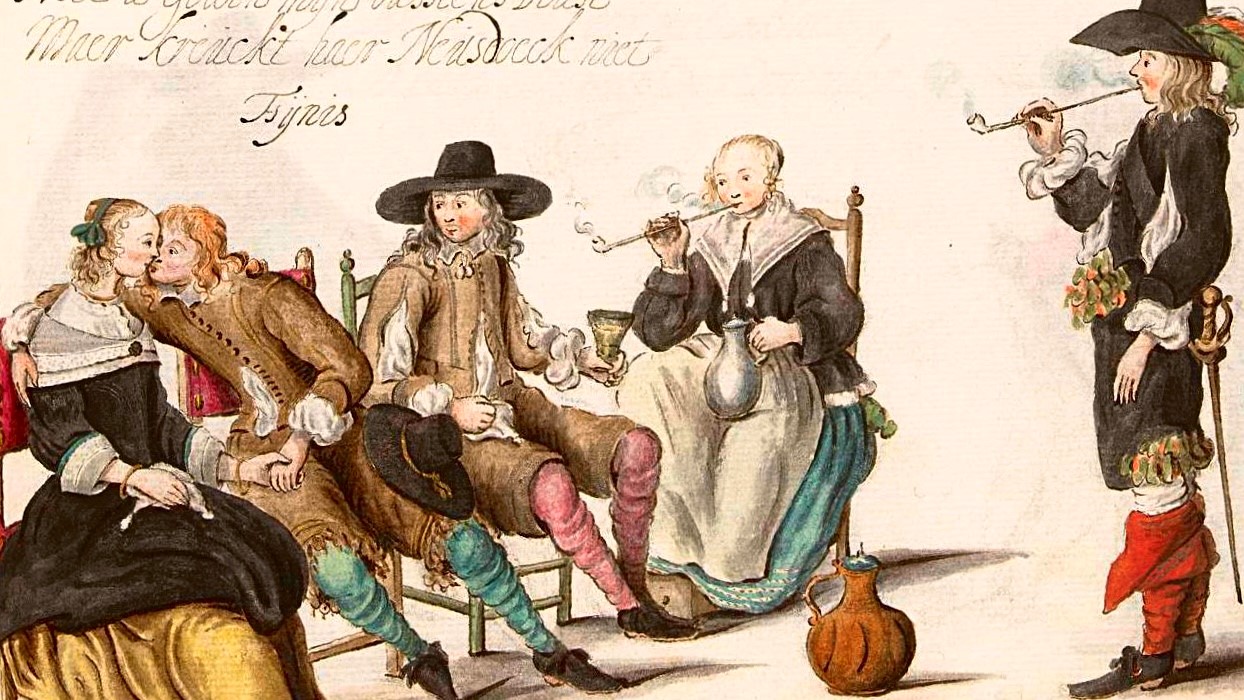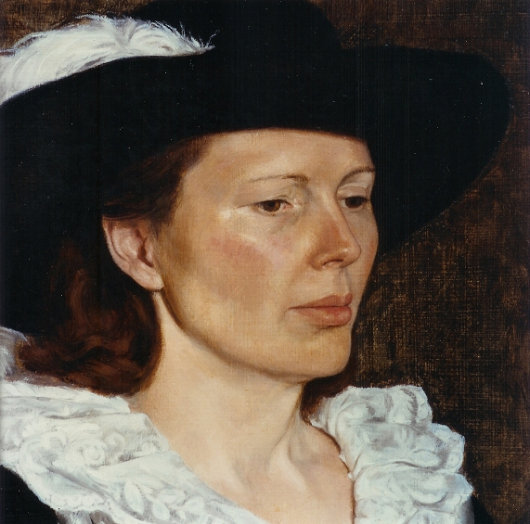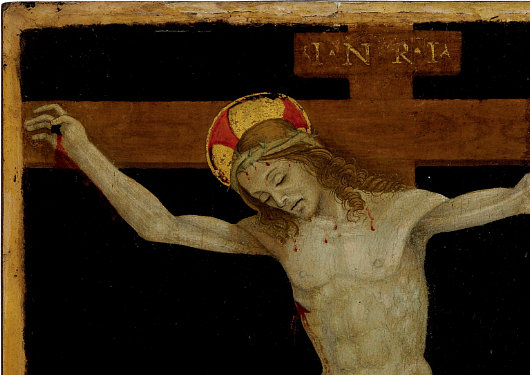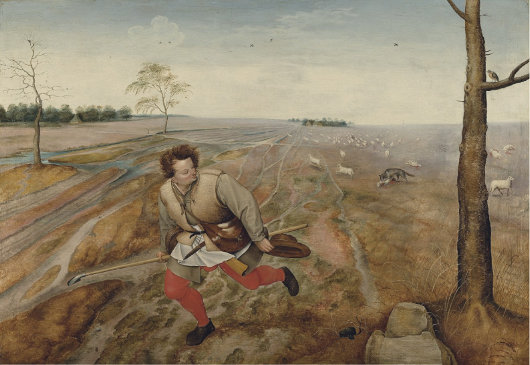Dutch Art
About Andrew Cusack
 Writer, web designer, etc.; born in New York; educated in Argentina, Scotland, and South Africa; now based in London.
Writer, web designer, etc.; born in New York; educated in Argentina, Scotland, and South Africa; now based in London. read more
News
Blogs
Reviews & Periodicals
Arts & Design
World
France
Mitteleuropa
Knickerbockers
Argentina
The Levant
Africa
Cape of Good Hope
Netherlands
Scandinavia
Québec
India
Muscovy
Germany
Academica
‘The first great commercial people’

[…]
And it was for this same reason that they were unable to maintain that supremacy: for all its busy tenacity, their effort lacked a higher inspiration and, therefore, real vitality. Numerically, too, they were too few to be able for long to subdue and batten on half the world. It was the same maladjustment which turned Sweden’s taste of world-power into an episode: the national basis was too small.
There is no doubt that the cultural level was at that time higher in Holland than in the rest of Europe. The universities enjoyed an international reputation. Leyden in particular was accounted supreme in philology, political science, and natural philosophy.
It was in Holland that Descartes and Spinoza lived and worked, as also the famous philologists Heinsius and Vossius, the great jurist-philosopher Grotius, and the poet Vondel, whose dramas were imitated all the world over.
The Elzevir dynasty dominated the European book trade, and the Elzevir publications — duodecimo editions of the Bible, the classics, and prominent contemporaries— were appreciated in every library for their elegant beauty and their correctness.
At a time when illiteracy was still almost universal in other lands, nearly everyone in Holland could read and write; and Dutch culture and manners were rated so high that in the higher ranks of society a man’s education was considered incomplete unless he could say that he had been finished off in Holland, “civilisé en Hollande”.
The colonising activities of the Dutch set in practically with the new century, and fill the first two-thirds of it. They quickly gained a footing in all quarters of the world.
On the north-east coast of South America they took possession of Guiana, and in North America they founded the New Amsterdam which was later to become New York: centuries afterwards the Dutch or “Knickerbocker” families still constituted a sort of aristocracy.
They spread themselves over the southern-most tip of Africa, where they became known as Boers, and imported from there the excellent Cape wines.
One whole continent bore their name: namely, New Holland — the later Australia — round which Tasman was the first to sail. Tasman did not, however, penetrate to the interior, but supposed Tasmania (which was named after him) to be a peninsula.
The Dutch were also the first to land on the southern extremity of America, which was named Cape Horn (Hoorn) after the birthplace of the discoverer.
Their greatest acquisitions, however, were in the Sunda islands: Sumatra, Java, Borneo, Celebes, and the Moluccas all came into their possession.
Extending out to Ceylon and Further India, by 1610 they had already founded their main base, Batavia, with its magnificent trade-buildings. In fact they ruled over the whole Indian archipelago. For a time they even held Brazil.
With all this, they never, in the true sense of the word, colonised, but merely set up trading centres, peripheral depots, with forts and factories, intended only for the economic exploitation of the country and the protection of the sea routes.
Nowhere did they succeed in making real conquests; for these, as we said before, they had not the necessary population, nor had they, as a purely commercial people, the smallest interest in doing so.
Their chief exports were costly spices, rice, and tea. To the last-named Europe accustomed itself but slowly. At the English Court it first appeared in 1664 and was not considered very palatable — for it was served as a vegetable. In France it was known a generation earlier, but even there it had to make its way slowly through a mountain of prejudice.
Moreover, its consumption was limited by the Dutch themselves, who, having a monopoly to export it, raised the prices to the level of sheer extortion. This was in fact their normal procedure throughout, and they did not shrink from the most infamous practices, such as the burning of large pepper and nutmeg nurseries and the sinking of whole cargoes.
Their home production, too, dominated the European market with its numerous specialities. All the world bought their clay pipes; a fishing fleet of more than two thousand vessels supplied the whole of Europe with herrings; and from Delft, the main seal of the china industry, the popular blue and white glazed jugs, dishes, and table implements, tiles, stoves, and fancy figures went forth to all points of the compass.
One Dutch article that was in universal demand was the tulip bulb. It became a sport and a science to breed this gorgeous flower in ever new colours, forms, and patterns. Immense tulip farms covered the ground in Holland, and amateurs or speculators would pay the price of an estate for a single rare fancy breed.
The get-rich-quick people threw themselves into the “option” game: that is, they sold costly specimens, which often existed only in imagination, against future delivery, paying only the difference between the agreed price and the price quoted on settling day. It is indeed the Dutch who may claim the dubious honour of having invented the modem stock-exchange system with all the manipulative practices that we know today.
The great tulip crash of 1637, which was the result of all this bubble trading, is the first stock-exchange collapse in the history of the world. The shares of the Dutch trading companies, in particular the East Indian (floated in 1602) and the West Indian (1621), were the first stocks to be handled in the stock-broking manner (their par value speedily tripled itself, and the dividends rose to twenty per cent and higher); and the Amsterdam Exchange, which ruled the world, became the finishing school for the game of “bull” and “bear.”
Then, too, during the first half of the seventeenth century, the Dutch were Europe’s sole middlemen: their mercantile marine was three times as big as that of all other countries.
And although — or indeed because — the whole world depended on it, there arose a bitter hatred against it (contrasting strangely with the extravagant admiration accorded to their manners and comforts) which was intensified by the brutal and reckless extremes to which they went in maintaining their advantage. “Trade must be free everywhere, up to the gates of hell,” was their supreme article of faith.
But by free trade they meant freedom for themselves — in other words, a ruthlessly exploited monopoly. This was also the kind of freedom that Grotius meant when in his famous treatise on international law, Mare liberum, he stated that the discovery of foreign countries does not in itself give right of possession, and that the sea by its very nature is outside all possession and is the property of everyone.
But as the sea was in fact in the possession of the Dutch, this liberal philosophy was no more than the historical mask for an economic terrorism.
In this wise the “United States” became the richest and most prosperous country of Europe. There was so much money that the rate of interest was only two to three per cent.
But although naturally the common people lived under far better conditions than elsewhere, the great profits were made by a comparatively small oligarchy of hard, fat money-bags, the so-called “Regent-families” who were in almost absolute control — since they filled all the leading posts in the government, the judicature, and the colonies — and looked down on the common man, the “Jan Hagel,” as contemptuously as did the aristocrats of other countries.
Opposed to them was the party of the Oranges, who by an unwritten law held the hereditary town governorships; their aim was indeed a legitimate monarchy, but they were nevertheless far more democratic in their ideas than the moneyed class, and were therefore beloved of the people. The best talent, military and technical, gathered about them. The first strategists of the age were on their staff. They nurtured a generation of virtuosi in siege warfare, privateering, artillery, and engineering science. The water-network created by them, which covered the whole of Holland, was considered a world marvel. They were masters, too, of diplomacy. …
Hans Laagland

Oil on wood, 1980
“It does not matter what the artist paints, but how he paints it,” proclaims the painter Hans Laagland. “That is why Rubens is a genius while Picasso’s work is passable.” Laagland, a Fleming himself, is one of the scant few artists in our day who paint in the grand style of the Flemish baroque master. He was born in Belgium’s Dutch province in 1965 and took up the brush and easel when ten years old. The young boy quickly developed a fascination with Rubens, considering and absorbing his works in the neighbouring city of Antwerp. Laagland’s emphasis is on traditional craftsmanship, painting in oils on wood panel, investigating and recreating the Old-Dutch lead white used by Rembrandt and the vermilion of Rubens. With a particularly capable hand at portraits, his work can be seen everywhere from the Norbertine abbey at Postel to the Belgian parliament in Brussels.
“It has been downhill ever since Rubens,” the painter says. Rembrandt — “Rubens’s disabled cousin” according to Laagland — was the last great painter; “What comes after him no longer has any significance.” Those versed in the Netherlandic tongue can read Mr. Laagland expounding upon his artistic ideas in De Kunstverduistering (“The Eclipse of Art”), his extended essay on art and painting now published as a book by KEI Zutphen. (more…)
Old Master & 19th Century at Christie’s

Being something of an auction-house dilettante — I last brought you a virtual update from the Dublin bidding chambers — there are a number of works up for grabs in tomorrow’s Old Master & 19th Century Paintings, Drawings, and Watercolors auction at Christie’s here in New York that caught my eye. A few other items sold in recent auctions follow at the bottom. (more…)
The Bad Shepherd

Pieter Brueghel II, The Bad Shepherd
Oil on panel, 29 in. x 41¼ in.
c. 1616, Private collection
With an original estimate of £1,000,000–£1,500,000, Pieter Brueghel the Younger’s The Bad Shepherd sold at a final hammer price of £2,505,250 at Christie’s in London this July. As the house lot notes state, it is “one of the most original and visually arresting of all images within the Brueghelian corpus of paintings”.
I am the good shepherd. The good shepherd lays down his life for the sheep. He who is a hireling and not a shepherd, whose own the sheep are not, sees the wolf coming and leaves the sheep and flees; and the wolf snatches them and scatters them. He flees because he is a hireling and cares nothing for the sheep.
It is significant that the distant horizon behind the sheep is broken only by a solitary church spire and a small farmstead. They seem to suggest that in abandoning his responsiblities the shepherd also rejects both the church and the community as he rushes headlong in the opposite direction. The mental anguish experienced by the shepherd is mirrored in a remarkable way by the barren landscape, shown from a dizzying bird’s eye perspective, stretching back into infinity. Interwoven only by vein-like tracks and ditches that lead the eye into the distance, the landscape is one of the artist’s most extraordinary achievements and very much a precursor to the psychological landscapes of the 20th century.
There is something arrestingly modern about this painting that fascinates me.
Search
Instagram: @andcusack
Click here for my Instagram photos.Most Recent Posts
- Burns Tower April 19, 2024
- Patrick in Parliament March 18, 2024
- Articles of Note: 13 March 2024 March 13, 2024
- Cambridge March 9, 2024
- Taken on Trust March 4, 2024
Most Recent Comments
Book Wishlist
Monthly Archives
Categories


